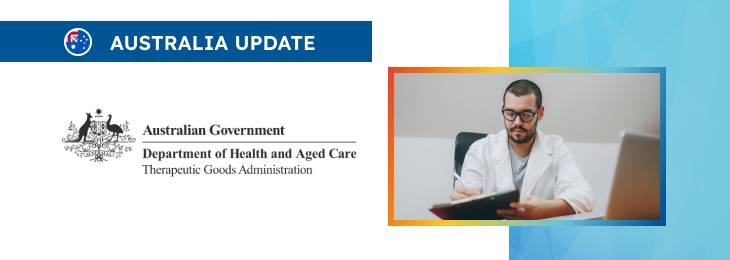The article describes the recall procedures to ensure the continued safety of medical devices and other therapeutic products allowed for marketing and use in Australia.

Table of content
The Therapeutic Goods Administration (TGA), an Australian regulating authority in healthcare products, has published a guidance document dedicated to uniform recall procedures for therapeutic goods (URPTG).
The document describes in detail the relevant procedures and also provides additional clarifications and recommendations the parties involved should follow to ensure compliance with the existing legal framework.
The authority also reserves the right to change the guidance and provision thereof, should such changes be reasonably necessary to reflect corresponding amendments to the underlying legislation.
Introduction to Recall and Non-Recall Actions
Recall and non-recall actions represent crucial interventions in the lifecycle of therapeutic goods supplied to the market, initiated when a problem is identified with a product that has already been distributed.
These actions are vitally important for maintaining public health and safety by addressing issues impacting the safety, efficacy, performance, presentation, and quality of therapeutic goods.
By virtue of the present guidance, the authority additionally emphasizes the importance of a structured approach to mitigating risks associated with pharmaceuticals, biologicals, and medical devices.

Criteria for Action
The document further outlines specific criteria to be considered by the parties responsible for healthcare products to determine whether a recall is needed.
Immediate Action Requirements
By the applicable regulatory requirements, certain conditions necessitate immediate action, such as when a product poses immediate or significant health risks, experiences tampering, or involves specific types of therapeutic goods like radiopharmaceuticals, blood or blood components, and biological or human tissues. These scenarios require swift action to mitigate potential risks to public health.
Rationale for Recall Actions
Recall actions are needed when issues related to therapeutic goods’ safety, efficacy, performance, presentation, or quality arise.
These problems may result from non-compliance with standards or requirements, necessitating a recall to prevent adverse health outcomes.
Four specific types of recall actions – recall, product defect correction, hazard alert, and product defect alert – are intended to address various situations, emphasizing the need for precise and appropriate responses to identified issues.
Justification for Non-Recall Actions
In cases where therapeutic goods meet all required specifications and standards without deficiencies, non-recall actions may be sufficient.
These actions, including safety alerts, product notifications, quarantine, and product withdrawals, address minor issues that do not warrant a total recall but still require attention to ensure continued safety and compliance.
Undertaking Actions
According to the guidance, a structured approach to implementing recall or non-recall actions involves the sponsor or supplier of the therapeutic goods, adherence to established procedures, and collaboration with relevant stakeholders, including the authority itself.
This process ensures that the action taken is appropriate to the nature of the issue and effectively mitigates any risk to public health.
Procedures for Immediate Actions
As mentioned, immediate actions are required in situations posing significant health risks, involving product tampering, or concerning specific therapeutic goods requiring rapid intervention.
The process involves immediate communication with customers and the TGA, emphasizing the urgency of preventing the use of the affected goods and mitigating potential risks.
Comprehensive Procedure for Recall and Non-Recall Actions
A detailed ten-step procedure described in the document outlines the process from initial information gathering to the final review of the action taken. This structured approach facilitates a thorough and effective response to issues with therapeutic goods, ensuring public health protection.
The steps encompass obtaining distribution and stock status, conducting a risk analysis, determining the action strategy, developing an action plan, drafting a communication strategy, submitting notifications, implementing the action, reporting on the action, and reviewing the process.
Conclusion
Recall and non-recall actions are critical components of regulatory oversight for therapeutic goods, ensuring that any issues posing risks to public health are promptly and effectively addressed.
The structured procedures for these actions reflect the complexity and importance of safeguarding public health through diligent monitoring and intervention.
These actions correspond to the responsibility of sponsors and suppliers, in consultation with regulatory bodies like the TGA, to maintain the highest standards of safety, efficacy, and quality in providing therapeutic goods.
How Can RegDesk Help?
RegDesk is a holistic Regulatory Information Management System that provides medical device and pharma companies with regulatory intelligence for over 120 markets worldwide. It can help you prepare and publish global applications, manage standards, run change assessments, and obtain real-time alerts on regulatory changes through a centralized platform. Our clients also have access to our network of over 4000 compliance experts worldwide to obtain verification on critical questions. Global expansion has never been this simple.

